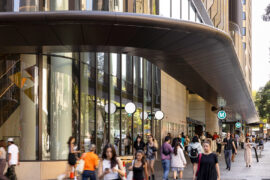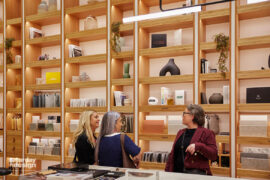We find out how SIA-Getz Architecture Prize 2016 laureate Hoang Thuc Hao creates culturally- and environmentally-sensitive architectural works in close collaboration with rural societies in Vietnam.

Suoi Re Community House, 1+1>2 International Architecture
November 29th, 2016
Vietnamese architect Hoang Thuc Hao has been awarded the 2016 Singapore Institute of Architects (SIA) – Getz Architecture Prize for Emergent Architecture in Asia – a biennial architecture award incepted in 2006 to recognise Asia-based architects who have made significant contributions to architectural progression in the region. Hoang is the first Vietnamese architect to be conferred the prize.
Born and raised in Hanoi, Vietnam, Hoang Thuc Hao grew up in a family of four. A graduate of the National University of Civil Engineering in Hanoi and the Polytechnic University of Turin in Milan, Hoang worked at ADC Architecture Office before establishing his own practice, 1+1>2 International Architecture, in 2004.
During the early stages of his practice, Hoang noticed that while rapid urbanisation has improved the economy, it has often left underprivileged rural communities isolated or exploited. Believing that architecture and education can improve lives, the 45-year-old architect has dedicated much of his career towards advancing rural societies, through which he ends up educating himself.
“Practising in community architecture has helped me reveal the beauty of local values – being able to connect [with] and support these people gives me happiness,” says the humble architect, who tells us that disadvantaged groups often possess great cultural values that are highly inspiring yet under-appreciated.
For Hoang, designing community projects means to embrace the tradition and culture of his end users and to discover their everyday life, struggles and needs. His first community project, the Suoi Re Community House, was built in 2008. Besides fulfilling a need in the village for public spaces such as a kindergarten or a library (often created as temporal or characterless ‘luxuries’ in remote villages), the Suoi Re community house adapts to environment and context.
The ground floor of the house was designed to fit the concave terrain, adapting to the extreme climate. It avoids the harsh conditions of the east northern monsoon and receives the east-southern monsoon, which keeps the house warm during winter and cool during summer – a place where children or the elders can go to when it gets too cold or warm. The house also leans on the mountains, avoiding storms and flash floods.
The work of Suoi Re attracted the attention of various non-governmental organisations and private investors that support the disadvantaged societies in Vietnam, which enabled Hoang to build community houses in Ta Phin, Ha Giang, Hoi An and Cam Thanh, responding to each unique site in collaboration with the respective villagers, who were involved in the design and construction process.
Hoang shares that it is important to build rapport with the villagers to curb trust issues. “That is why we act more practical than theoretical, which means that we would often drive multiple times to the villagers’ place to communicate with them in person and to work with them on several construction examples. After the community understands that the design is based on their culture, and experience the construction process first-hand, we are able to gain the valuable trust and the participation from the villagers.”
Hoang also cites the ‘Earth’ as an important and often under-valued collaborator, explaining, “[The] Earth has great characteristics that can deal with humidity in our regional climate.” With every project, he aims to maximise the Earth’s resources, while preserving the environment to fulfill the needs of people.
Outside Vietnam, Hoang has designed the Bhutan Happiness Centre, which made it to the shortlist of this year’s World Architecture Festival awards. He also took part in the Mobile World Congress in Barcelona 2015 by designing a booth for Viettel Company. At present, Hoang is working on an educational facility to further his efforts at improving lives for the underprivileged.
INDESIGN is on instagram
Follow @indesignlive
A searchable and comprehensive guide for specifying leading products and their suppliers
Keep up to date with the latest and greatest from our industry BFF's!

A longstanding partnership turns a historic city into a hub for emerging talent

A curated exhibition in Frederiksstaden captures the spirit of Australian design
The new range features slabs with warm, earthy palettes that lend a sense of organic luxury to every space.

For Aidan Mawhinney, the secret ingredient to Living Edge’s success “comes down to people, product and place.” As the brand celebrates a significant 25-year milestone, it’s that commitment to authentic, sustainable design – and the people behind it all – that continues to anchor its legacy.
The internet never sleeps! Here's the stuff you might have missed

‘Civic Vision | Foster + Partners’ is the first comprehensive exhibition of the practice’s work to be held in Australia, providing an in-depth look at its global portfolio of work since it was founded in 1967 by Norman Foster.

Saturday Indesign lit up the CBD and South Melbourne with design, wellness, hospitality, and community in a day full of creativity and connection.